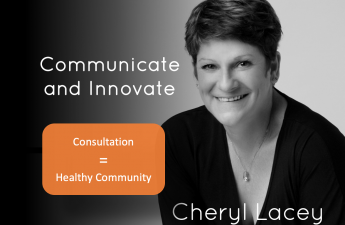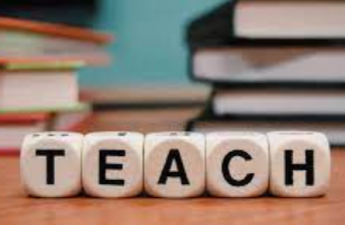Australian education is in dire need of overhaul. If you need evidence, look at the 2015 exam results recently released by the Programme for International Student Assessment (PISA).
The PISA exam, which is administered every three years, measures 15 year-old students’ abilities, in 73 countries. It is the world’s leading external exam, and provides a snapshot of a nation’s education. In 2015, Australia was ranked 10th in science – down from 8th position in 2012; 12th in reading – down from 10th; and in mathematics … yes, down again – from 17th to 20th place.
Despite the billions of dollars spent, year after year, we have been in consistent decline since 2000. These latest results raise essential questions about our educational system and our global ranking, and suggest the need for dramatic change, if we are to achieve improved educational outcomes for our students and, indeed, for our nation.
We mustn’t be afraid to go deep – to the root cause of the stagnation and decline.
Dramatic change calls for dramatic action. We mustn’t be afraid to go deep – to the root cause of the stagnation and decline. Neither should we resist the repurposing of some of the greatest initiatives previously presented by both major parties.
In 1788, the First Fleet sailed into Botany Bay. Among the first arrivals were 36 children: 19 were the offspring of the marines and 17 were from convict parents. Children of the privileged and the poor lived together in the penal colony, under one rule of law. We had our first charter of justice, and it articulated law and order, but failed in its provisions for education.
As our colonies grew, so too did the need to address the significant failure to provide education.
As our colonies grew, so too did the need to address the significant failure to provide education. There were attempts to provide schools for the children and stem the vagrancy that came with rapid population growth. Trial systems were implemented, and there were the inevitable struggles for control, and loss of trust. The result was a major fallout between government, parents, and faith groups.
The political battle that ensued pitched man against man, colony against colony, culture against culture, and faith against faith. Land, power, legislation and opportunity were all part of the balance – or imbalance – and a centralised public system was born. Schools and schooling became big business.
In matters of education, the USA is similar to Australia in many ways. It shares its powers between Federal and State Government, and it has seen a decline in PISA performance. There have also been some outstanding reforms, designed to counter lack of choice, and offer opportunity and progress to every child; none of these reforms has survived the poison of political ego.
Australia and the USA have both public and private schools. Each has denominational institutions, home schooling, international schools, and virtual schools. Australia has selective entry public schools, and the USA has ‘magnet’ schools. Although they are public, these schools are highly competitive and highly selective. They’re renowned for their special programs and high academic standards.
The USA also has a growing charter school movement. Charter schools are public but, as the term implies, they have the freedom to chart a more autonomous course, reducing the top-down influence of Federal and State governments. Charter schools are independently operated by community organisations or for-profit companies, who receive tax dollars and private sponsorship.
The challenge for both the USA and Australia is to create a decentralised, flexible school system, where Federal and State governments put a bipartisan approach to greater choice and greater autonomy ahead of political power.
In Australia, the current funding model is shaped by the Gonski reforms. It links funding to children’s needs, but funds still go directly to the schools. In some US states, however, school funding is based on a ‘voucher system’, where funding follows the child. This system fosters greater choice, and access to more autonomous, specialised schools, including magnet and charter schools. This approach has attracted Donald Trump’s attention.
Some of the things Trump has to say about school reform in the USA raise questions for Australia, too:
1. Let Them Choose
‘As President, I will establish the national goal of providing choice to every American child…’ Mr Trump said.
Should Australia consider a voucher system, or similar, so as to provide greater opportunity for all children, particularly the disadvantaged, to attend the school of their choice?
2. Let Schools Compete
‘Who’s better off, the kids who use vouchers to go to the school of their choice, or the ones who choose to stay in public school? All of them. That’s the way it works in a competitive system’, Mr. Trump said.
Should Australia introduce charter schools, giving local schools the opportunity to choose their area of expertise, thereby attracting expert teachers and talented students?
3. Portability and Local School Boards
‘I’m not cutting services, but I am cutting spending. We’re going to be cutting tremendous amounts of money and waste and fraud and abuse’, says Mr. Trump.
Should Australia consider an ‘Educare’ system – similar to Medicare? The same accountabilities would apply, and funding would be available for all children to receive effective literacy, numeracy, and values education. If schools offered specialist education, it would fall under a ‘user pays’ or voucher model?
The essence of education can be described as the imparting of knowledge, positive judgement, culture, and well-developed wisdom from generation to generation.
The essence of education can be described as the imparting of knowledge, positive judgement, culture, and well-developed wisdom from generation to generation. Australia was founded as a Judeo-Christian nation and, it has to be said, also founded on an omission, which has seen education used as a political football rather than a time-honoured gift.
The USA also has a scattered system, with pockets of success and deep wells of failure. Perhaps we have something to learn from Trump’s enthusiasm. Perhaps it’s time for Australia and the USA to work in unison, to provide education systems that value, and offer, diversity, choice and opportunity. Perhaps it’s time to be human first, politically correct second, and to develop first-rate education systems that cultivate the ‘Australian Fair Go’ and the ‘Great American Dream’.
Australian education has gone backwards. This trend is reversible. All that is required is the will of our people, our politicians and a genuine belief in what’s possible. Only one question remains. How hungry are we?
Cheryl Lacey is principal of Cheryl Lacey Consulting, a firm focused on elevating educational outcomes by putting the right professionals at the centre of the right improvement and performance strategies.
To learn more contact Cheryl at cheryl@cheryllacey.com or visit www.cheryllacey.com
© Cheryl Lacey 2016. All rights reserved




